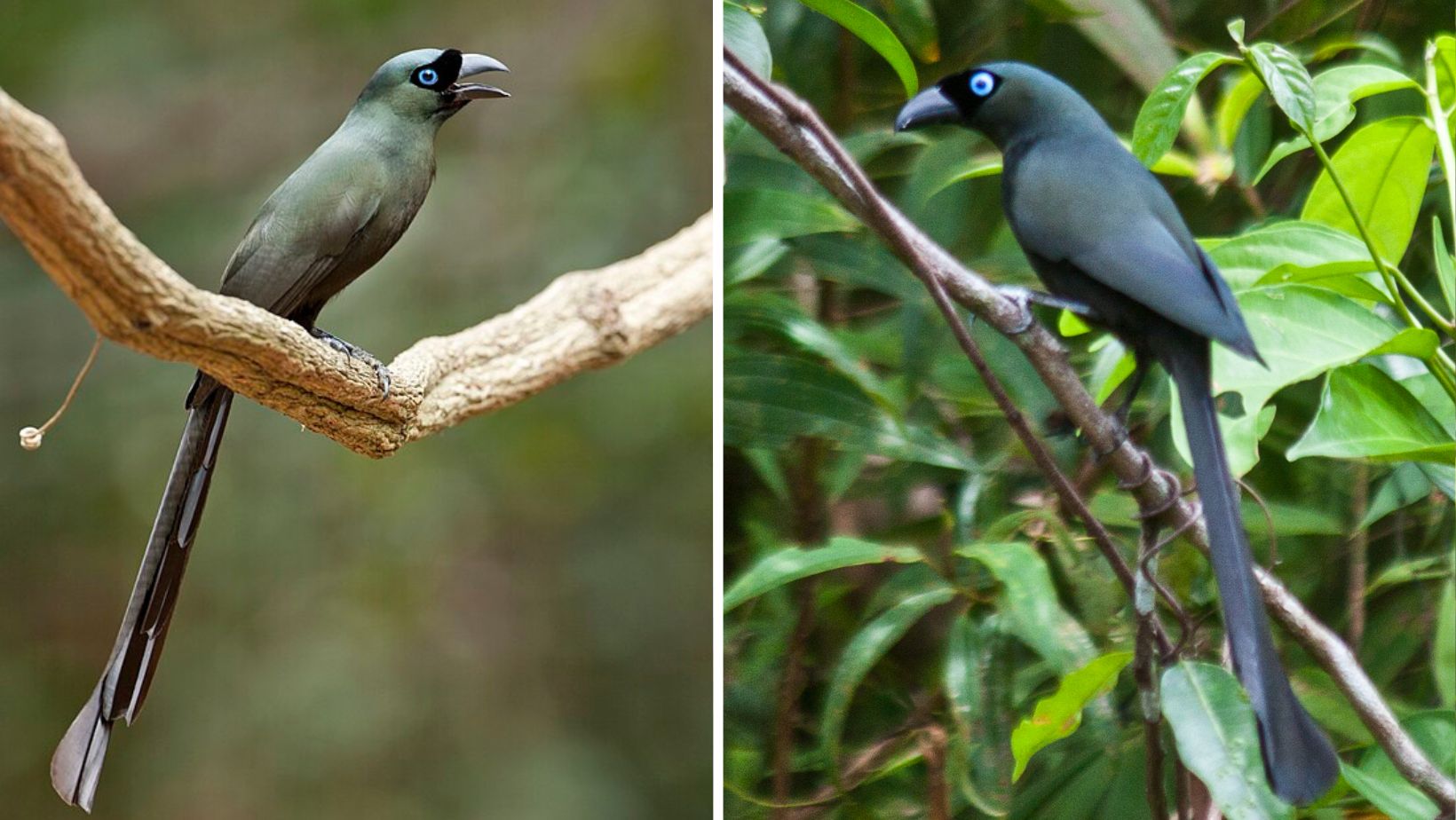
A bird who at first glance looks black, but in good light is in fact a shimmering bronze-green!
Meet the Racket-tailed Treepie:
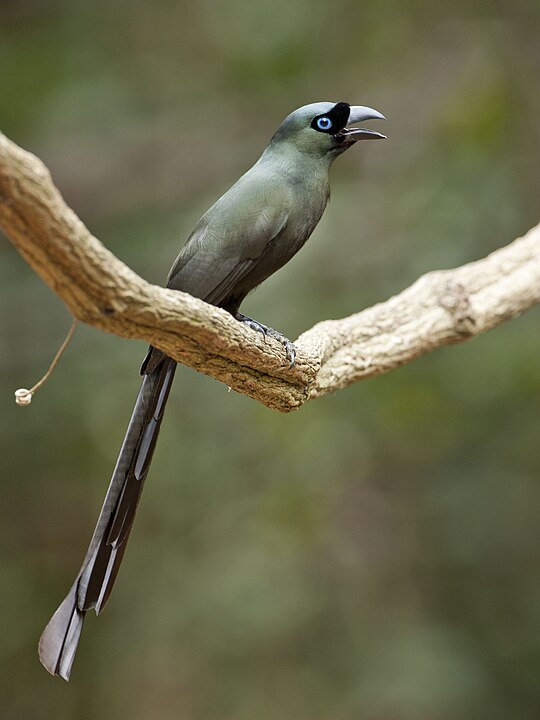 “Racket-tailed Treepie – Crypsirina temia” by Michael Gillam is licensed under CC BY 2.0.
“Racket-tailed Treepie – Crypsirina temia” by Michael Gillam is licensed under CC BY 2.0.
The racket-tailed treepie (Crypsirina temia) is a fascinating member of the Corvidae family, which includes crows and other related birds, found in Asia. The size ranges from 31 to 33 cm, classifying it as a small treepie with a distinct all-dark appearance. However, a bronze-green sheen stands out, particularly in good lighting, against the black of the face and throat. This birds remaining plumage is blackish. A long tail broadens towards the end, displaying a blackish hue with a hint of green. The iris is a stunning turquoise-blue shade, darkening as it approaches the pupil to a deep black. Both the bill and feet are black.
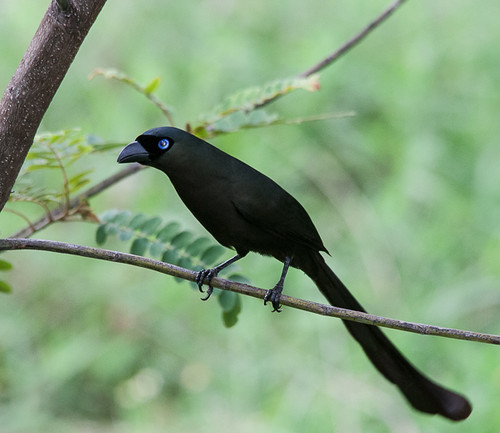 “Racket Tailed Treepie-1-3” by Thailand Backyard Birds is licensed under CC BY-SA 2.0.
“Racket Tailed Treepie-1-3” by Thailand Backyard Birds is licensed under CC BY-SA 2.0.
Both sexes exhibit similar characteristics.
Juveniles possess a brown iris and appear overall dull greyish-black.
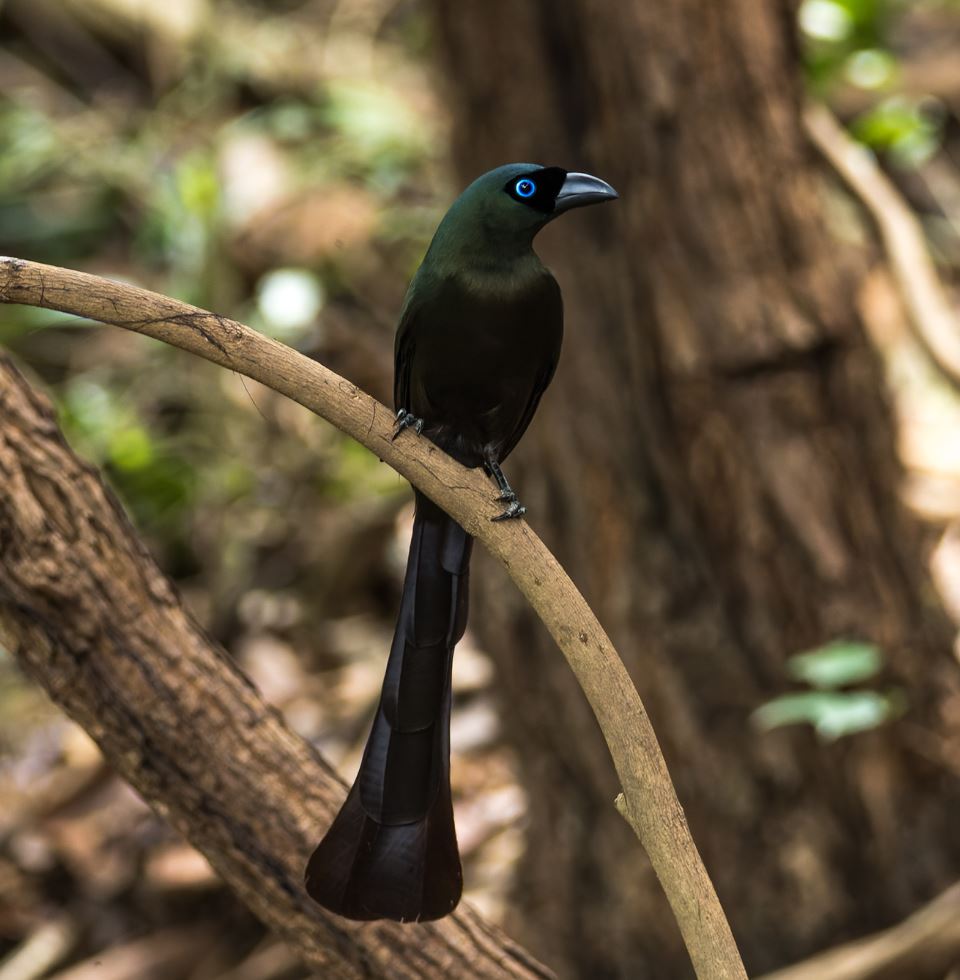 “racket-tailed treepie” by Wich’yanan L is licensed under CC BY 4.0. (cropped)
“racket-tailed treepie” by Wich’yanan L is licensed under CC BY 4.0. (cropped)
This treepie is found in the regions stretching from southern Myanmar to northern Malaya, Indochina, Java, and Bali. However, it’s notably absent in the extreme northwest peninsular Malaysia. Older specimens once believed to be from Sumatra and Borneo are now considered erroneous. Despite this, the species is not uncommon across the majority of its range.
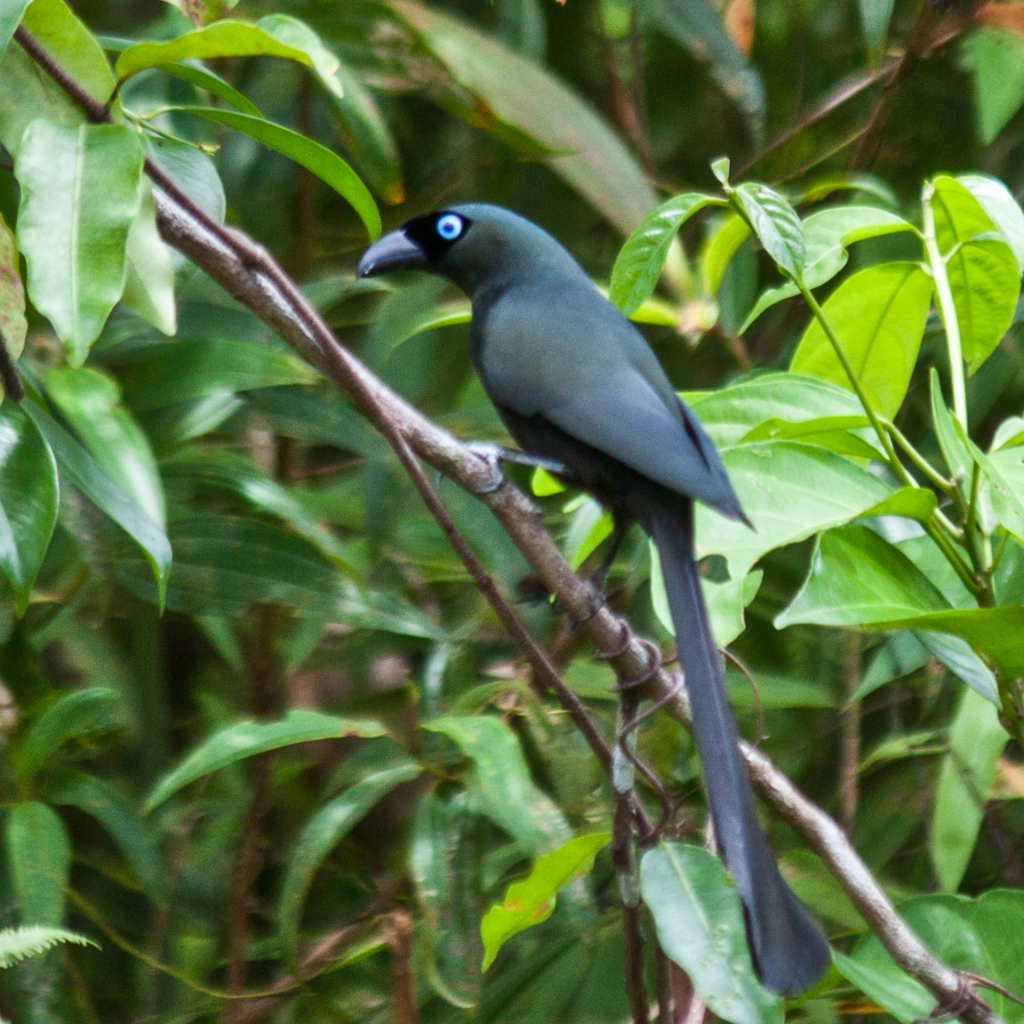 “racket-tailed treepie” by Gerard Chartier is licensed under CC BY 4.0.
“racket-tailed treepie” by Gerard Chartier is licensed under CC BY 4.0.
The bird thrives in a variety of environments, including scrub and secondary growth, open fields, gardens, bamboo thickets, and open forests, typically at altitudes up to 1000 meters.
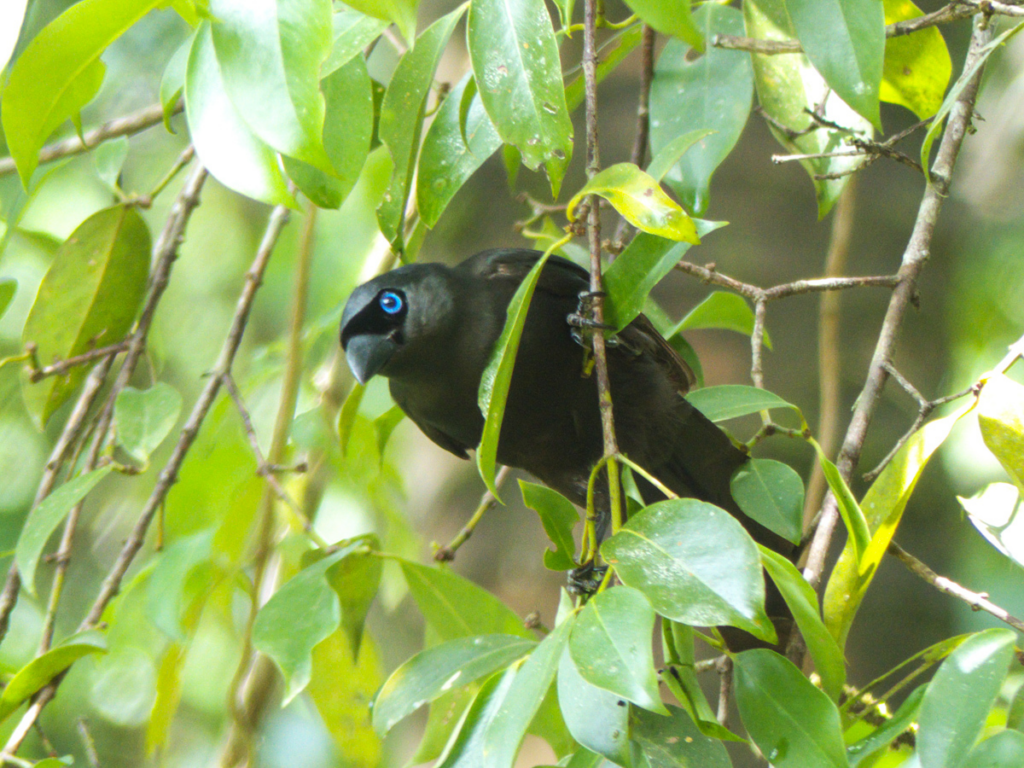 “racket-tailed treepie” by Gerard Chartier is licensed under CC BY 4.0.
“racket-tailed treepie” by Gerard Chartier is licensed under CC BY 4.0.
Primarily an arboreal feeder, this treepie employs its tail as a balancing organ. Its diet consists mainly of insects and fruit. Breeding activity is reported from April to August, with the bird constructing cup-shaped nests in bamboo or shrubs, especially those with thorns, often surrounded by open grassy areas.
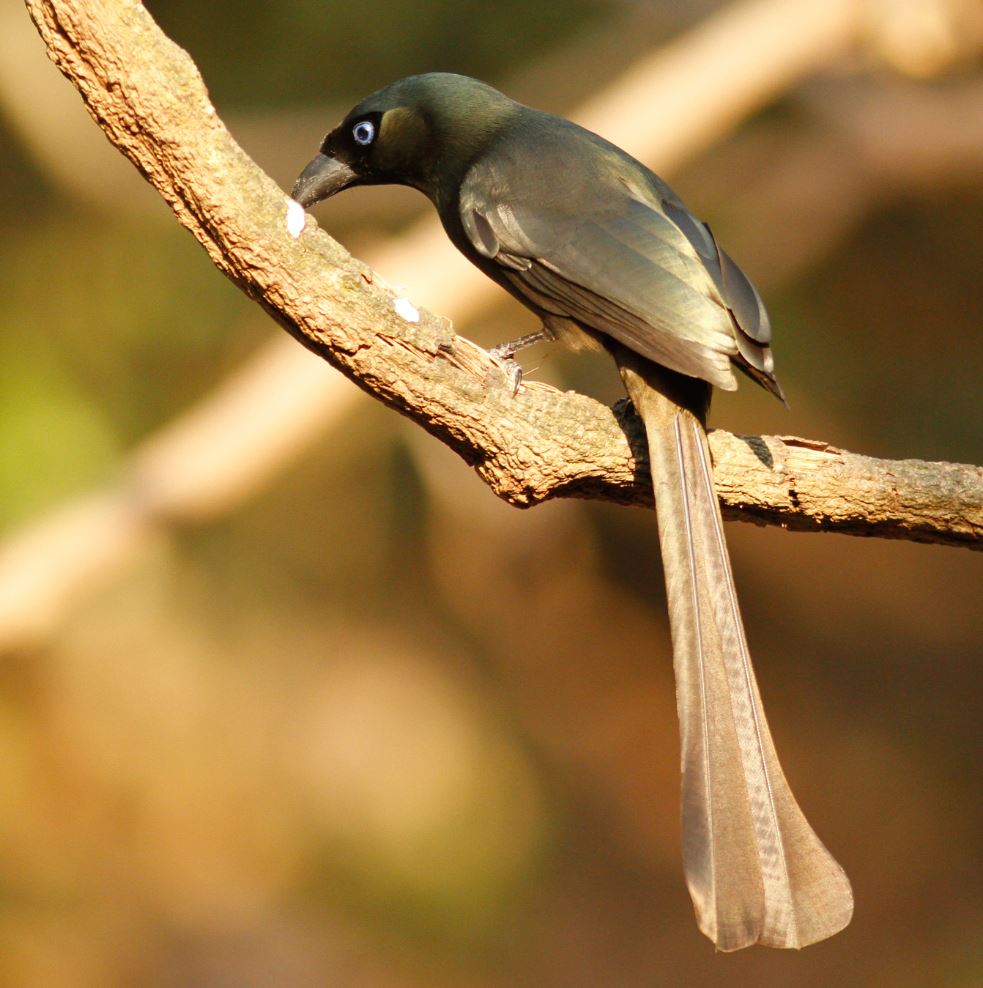 “racket-tailed treepie” by Julien Renoult is licensed under CC BY 4.0. (cropped)
“racket-tailed treepie” by Julien Renoult is licensed under CC BY 4.0. (cropped)
Clutches generally consist of 2–4 eggs. Its vocalizations are typically described as harsh. The species is known to be a resident within its known range.
 “Racket-tailed treepie (Crypsirina temia)” by Jason Thompson is licensed under CC BY 2.0.
“Racket-tailed treepie (Crypsirina temia)” by Jason Thompson is licensed under CC BY 2.0.
This bird is regarded as of Least Concern on the IUCN Red List.
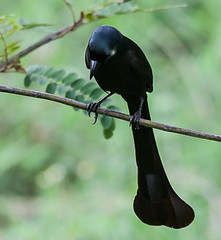 “Racket Tailed Treepie-1-2” by Thailand Backyard Birds is licensed under CC BY-SA 2.0.
“Racket Tailed Treepie-1-2” by Thailand Backyard Birds is licensed under CC BY-SA 2.0.
Why not watch this bird in action:
This article uses material from Wikipedia.org which is licensed under the GNU Free Documentation License via Copyright Wikipedia. Images on this page are the sole property of the photographers (unless marked as Public Domain). Please read the license and or contact the photographers directly before using them for any purpose. Thank you all.
Garish In The Best Possible Way, This Vibrant Bird Stands Out For Reasons That Are Obvious To See!
Please SHARE this article with all your bird-loving friends and family.

